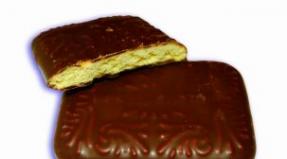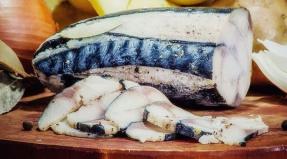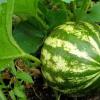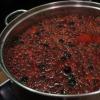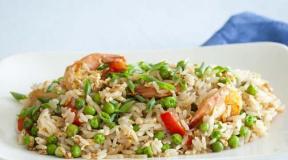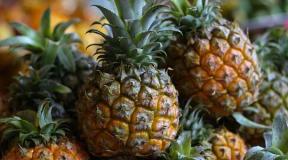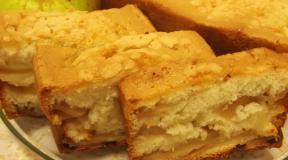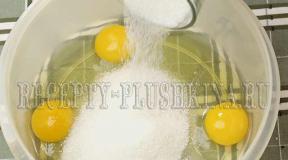The benefits of green tea. How To Choose Good Green Tea
The older generation will recall with nostalgia black tea in "packaging with an elephant" as a symbol of the Soviet era. It was Indian, or a mixture of Georgian and Indian tea, and was a welcome purchase for any family. Millions of people drink tea every day. Buying its different varieties, they are looking for the ideal tea for themselves: which one will be the best? Black, or maybe green? How to choose when the classification of tea is so huge that it is simply impossible to taste everything? The test purchase of the most popular brands will help to compile the rating of 2016 and determine the choice of this tasty, healthy drink.
Black or green tea?
Green and black tea can be obtained from the leaves of one bush. The difference in color, taste, useful properties is achieved by the time of fermentation of the leaves.
Green tea undergoes minimal oxidation, due to which it retains a unique set of vitamins and elements.
For black tea, the leaves are subjected to maximum fermentation, which allows you to obtain a rich color, tart and bright taste of the drink.
Numerous controversies in favor of choosing black or green tea do not have a clear answer. Both drinks can be beneficial or harmful to the body.
Black tea is beneficial in that it:
- has a long-term invigorating effect, due to which the work of the brain is enhanced;
- improves blood circulation, helps to cleanse from toxins;
- normalizes the digestive process;
- optimizes the general condition of the body.
However, all the beneficial properties of black tea can turn into harm if consumed excessively or improperly prepared.

It is interesting that green tea appeared in our country almost on a par with black, but did not gain much popularity. Over time, its deliveries from China stopped altogether. The second wave of green tea coming to the Russian market happened 20 years ago, and now green tea has firmly established itself on the Russian market and has found its fans.
Green tea is beneficial, it:
- strengthens and supports blood vessels;
- characterized by antibacterial properties;
- has a positive effect on the liver;
- contributes to the rejuvenation of the body.
A large amount of green tea, brewing it too strong, drinking it at inappropriate periods can neutralize all the beneficial characteristics of this drink.
Advice. There is no definitive answer to the question: which tea is better to drink - black or green? It is recommended that you consume both of these beverages in moderation to reap the benefits.
Russian tea market
The Russian tea market is represented mainly by multi-brand manufacturing companies:
- the company "Orimi-trade" produces teas "Princess (Java, Kandy, Nuri, Gita)", Greenfield, Tess;
- Unilever produces tea under the brands Lipton, Brooke Bond, Beseda;
- the May company owns the May Tea, Lisma, Curtis trademarks;
- the Sapsan company produces tea under the brands Akbar, Gordon, Bernley.
Also widely known are the trade marks: Ahmad Tea, Hilltop, Riston, Dilmah, Maitre, “The Same”.
How to choose the best tea: selection criteria
When choosing the best tea, you need to distract from the design of its packaging and look at the labeling.
In accordance with Russian GOST, the quality of tea is determined by its grade: bouquet (highest quality), premium grade, first, second and third grade.
International labeling is a matrix and has 10 quality indicators for the texture of a tea leaf and 7 indicators characterizing its properties.

So, the best large leaf tea will be marked with letters:
- F (Flowery) - tea from slightly opened buds, the best tea.
- P (Pekoe) is a tea made from tea buds and the first two leaves.
- O (Orange) - tea made from young leaves.
- T (tippy) - exclusive tea from tea buds, the most expensive.
- G (golden) - tea with yellow tips (buds).
- S (special) - tea, exclusive for any characteristic.
In addition to the labeling, you should pay attention to the tea material itself:
- The infusion for black tea should be almost black without gray and brown shades, for green - there should be no leaves of white or bright green;
- tea leaves should be the same without twigs, dust and tea fines;
- "Wire" (strongly curled) leaves characterize the degree of fermentation and the quality of the tea. For green tea, weak leaf curl is not an indicator of poor quality;
- the smell should be pleasant, without foreign aromas;
- high-quality tea should be fresh, the best - from 1-2 monthly leaves. Tea material quickly loses its beneficial properties and aroma;
- the packaging must be airtight with an indication of the composition, expiration date, manufacturer in Russian.
All tea sold in the Russian mass market is collected by special machines, therefore, at best, the counters display tea labeled Orange or Orange Pekoe. Tea made from tea buds will be exclusive and expensive; it is not available on the market.
Attention! Tea bags are of the lowest quality. It is produced from tea waste, tea dust. Such a drink will not be useful.
Test purchase: tea rating 2016
Based on the results of the test purchase, a rating of loose tea was compiled. The scores were given taking into account the appearance of tea leaves, on the basis of aroma, taste, color of the brewed tea, in addition, a check was made on the compliance of the samples with the compositions and varieties declared on the packaging.
- 1st place. Ahmad tea Ceylon Tea high mountain, grade FBOPF
- 2nd place. Greenfield Golden Ceylon, variety bouquet
- 3rd place. Riston Premium English Tea, premium
- 4th place. Akbar Violet Alexandrite, grade OP
- 5th place. Dilmah Ceylon, premium
- 6th place. Mayskiy, the top grade is declared on the package. According to experts, tea corresponds to the 2nd grade. Teapots of lamellar structure, not twisted enough

Chai Ahmad - Leader of Test Purchase
The first place, according to consumers' estimates, belongs to Ahmad tea brand black leaf tea. This tea has the ability to form a transparent infusion of bright color, has a pleasant taste and clean aroma. The organoleptic characteristics of all samples were at their best, the content of harmful impurities was not revealed.
According to the estimates of green leaf tea lovers, the rating was compiled taking into account the smell, taste, color of the brewed infusion, as well as the appearance of tea leaves, the presence of impurities.
- 1st place. Greenfield flying dragon
- 2nd place. Tess style
- 3rd place. Ahmad tea Green Tea
- 4th place. Princess Java Traditional
- 5th place. Lisma Toning
- 6th place. Maitre Vert Mountain
Green leaf tea consumers preferred Greenfield Flying Dragon tea as it has a refreshing, pleasant, mild taste, transparent greenish color and delicate floral aroma.
Fragrant, tart, dark transparent amber color, black tea is able to gather the whole family at a round table. Fresh, soft, light jade green tea will perfectly quench your thirst on a summer day. Tea drinking traditions in Russia are strong, so choosing the best tea, be it black or green, is always relevant. With a focus on quality features, labeling, packaging, this choice will be made correctly.
The best tea according to the "Test Purchase" - video
Our expert - famous orientalist, doctor of historical sciences, professor Alexey Maslov.
Tea and ceremony
Black tea awakens the mind - it is brewed very strong, drunk in small bowls, literally half a sip. But green tea is green light! In Japan, preference is given to the varieties "Sencha" and "Tencha" (it is more correct to pronounce "Sencha", "Tencha").
In China, the choice is more varied, up to flower mixtures - with jasmine, peony, orchid, but these variations are based on the three main varieties of Chinese green tea.
The classic Chinese tea ceremony is centered around Kung Fu tea, the finest selection of Pu-erh tea. This is an old and highly fermented tea that has been caked in a special way over the years. When brewed, the drink turns out to be brown in color. From time immemorial, "puer" was drunk by Buddhist monks so as not to fall asleep during meditation, for which it is often called "tea of mastery". This tea invigorates well, awakens consciousness, but it has a much softer effect than coffee.
The second famous Chinese green tea is Longjing (Dragon Well). It is drunk fresh, has an amazing aroma, conducive to conversation.
But oolong tea (reddish-brown in color) is remarkably soothing.
The first brew is never drunk. And not only for reasons of hygiene (it is not known who collected the tea, so it is better to pour boiling water over it and pour out the water), the main reason is that the swelling and opening of tea leaves occurs only from the second brewing. The second, third and fourth brews are the richest. Just as a good perfume has the first scent, the second and the third, so real tea reveals its properties step by step.
Originally from the highlands
How can a novice connoisseur choose a good tea? Remember the main features of tea nobility.
1. High origin. Although technology now makes it possible to grow tea anywhere, the most delicious is alpine green tea, born at least 1000 m above sea level. Here nature has created ideal conditions for revealing the best properties of the plant: the purest air, optimal soil mineralization, an equal combination of sun and moisture.
In Japan, due to the diminutiveness of the country, alpine tea is grown in small quantities, and the best Chinese varieties come from the provinces of Anhui, Fujian, and Hunan. Taiwanese mountain tea is also remarkable.
2. Price Is another sign of dignity. It is clear that alpine green tea is always expensive: from $ 220 per kilogram in the producing country itself. And the prices for the rarest varieties with a unique taste can reach $ 1500 for 50 g! However, do not be discouraged that this tea is too expensive for you. Not every European is able to appreciate all the charm and joy of these varieties.
3. Freshness- the most important quality of any green tea, except, perhaps, "pu-erh" tea, which is specially stored for years under certain conditions for fermentation. The most expensive tea - from 1-2-month-old leaves, 3-5-month-old leaves drop in price by 2-3 times, but their properties are almost the same - you won't even feel the difference. Tea stored for six months to a year loses quality and is discounted up to 20%.
And after a year, such tea leaves can be safely thrown away: due to the splitting of tannin, the taste of tea becomes unpleasantly tart, bitter, and such tea leaves smell like a broom. Alas, many businessmen bring (usually from China) this junk tea at the price of export from the warehouse and sell it in Russia almost as an elite one.
4. Color uniformity... If whitish or completely green leaves come across, it means that this is a mixture of different crops. Blending is allowed only for teas of the same year, but not of different years!
5. The right tea- this is a scatter, which is sealed in a bag with you. Packaged in a factory, it can be stored for years. Modern vacuum packaging allows the product to retain its properties for a long time, but still it will not be the freshest brew.
6. The perfect tea house- porcelain, even better interspersed with fine rice, due to which the walls of the dishes become transparent. Having poured out the required amount of tea leaves, hurry to tightly close the porcelain lid - tea very quickly absorbs any odors, and contact with oxygen badly affects its beneficial properties and taste.
In a porcelain container, tea can be stored both at room temperature and in the refrigerator.
Valeria Korostyleva
Tea without tea. In China, you will be offered a dozen varieties of tea that are not formally related to a green drink - say, "tea of eight jewels" ("ba bao cha"), somewhat reminiscent of the Egyptian hibiscus. In fact, it is a hot compote that is well drunk in the summer. Or tea made from peony petals, where there is not a single tea leaf. Chinese masters have learned to make peach, melon tea without adding flowers, leaves and fruits of these plants. But melon really smells! Delicious liji tea is especially popular among women - the berries of this fruit tree have a slightly spicy and refreshing scent. It whitens the complexion. They say that beauties drank liji tea back in the 7th century, which made them more attractive.
Maturity drink
Green tea is a storehouse of vitamins, and precisely those that slow down the aging process: vitamins E, C and beta-carotene.
In fact, green and black tea are made from the same raw materials, but using different technologies.
As a result, green in chemical composition is closer to fresh tea leaves. And fresh leaves contain 4 times more vitamin C than orange juice! When dried and dried, some of the vitamin C is, of course, lost. But still there is a lot of it: in green - ascorbic acid is 10 times more than in black. Due to the richness of vitamin C, tea mitigates the harm from smoking. The body of a smoker of this vitamin is much less than that of a non-smoker.
Green tea has many health benefits. It relaxes and soothes. Thanks to carotene, it has a good effect on vision, especially in the elderly. Vitamin B2 (riboflavin), which is also abundant in green tea, protects our skin from dryness and flaking. And with age, the ladies, you know, the skin becomes drier, loses its elasticity.
Tea has no equal in the plant world in terms of the content of vitamin R. This vitamin strengthens the walls of blood vessels, and thus supports the normal functioning of the cardiovascular system. This is also important for the elderly. Tea lowers blood cholesterol levels and promotes the breakdown of fats. A great drink for those who want to lose weight!
Green tea lowers blood pressure. The phenol contained in tea leaves activates the process of removing heavy metals. They accumulate in the body of those who live in an unfavorable ecological environment. And what city dweller can say that his environment is favorable?
The Institute of Prevention of the Academy of Sciences of the People's Republic of China, which conducted a study of 140 varieties of tea, came to the conclusion that phenol and theine prevent the formation of malignant tumors.
And green tea also prevents the formation of caries, normalizes digestion, removes toxins and copes well with hangover. At the end of this list of merits I would like to put three exclamation marks and ask: "Shouldn't we drink tea now ?!"
Marina Matveeva
The benefits of green tea have been known since ancient times - in China, this drink was a real medicine. Today we see that interest in green tea is returning, although the market for this product is still very scarce in our country. What green tea should the consumer choose to enjoy the indescribable taste and avoid trouble? Let's talk about this.
There are a lot of types of green tea. Many of them differ in the way the tea leaves are processed, but in general it can be said that green tea belongs to the type of so-called "non-fermented" teas - i.e. the tea leaf remains practically fresh, which means it retains all the beneficial substances inherent in tea.
The composition of green tea is very rich: this drink contains almost all vitamins and minerals known to science, and also strikes the imagination with its rich protein (!) Composition: in terms of nutritional value, tea is equated to legumes. The peculiarity of green tea is the presence of theine alkaloid (a lightweight analogue of caffeine), tannin and catechins. It is thanks to these substances that we love tea so much for its invigorating, antioxidant, antimicrobial, and so on. properties.
Green tea is striking in that when brewed, it generously shares the accumulated useful substances with the solution, and is in no hurry to give away harmful ones. Therefore, if you use green tea correctly, namely: drink the drink during the day in small (!) Quantities and not drink at night, you will really feel the benefits of green tea, heal and rejuvenate your body.

What quality green tea looks like
Green tea grows in China and Japan - respectively, the famous companies of these countries are likely to delight you with good tea.
Buy tea in specialized stores, by weight or in cans: this way you are less likely to buy low-quality raw materials. Be sure to purchase large leaf tea. Remember, quality tea is never cheap.
The best green teas are harvested in early April - these are the young leaves and buds of the tea bush. In this case, the finished tea has a curled or elongated shape. In general, the form of green tea is very diverse: it can be flat, pressed, spiral, knitted, etc. The main thing when choosing a quality tea is not its shape, but the color of the dried leaf: it should be natural green. Pay attention to the shelf life of tea: the fresher the tea leaves, the better.
When choosing a tea, be sure to smell it: a herbal aroma with floral or fruity notes is what you need.
What low-quality green tea looks like
Unfortunately, bad green tea also happens, and many of our fellow citizens shamelessly confuse it with good. So, the well-known aroma and aftertaste of fish, hay, strong bitterness or aftertaste of cologne, sickening aroma of fruit - all these are signs of low-quality green tea. Often this tea is supplied by Ceylon and India.
Any darkening on green tea leaves is a sign of marriage.
A novice tea connoisseur has many questions on this topic: which tea can be called useful, which type of green tea to choose?
Today there are many different types of tea. Sometimes, without the help of an experienced person who knows a lot about this art, it is difficult for a beginner to figure it out on his own and stop at a specific type of drink.
High-quality green tea cannot be compared, focusing only on the price category due to the fact that even a drink with the same name can differ in price by a significant amount
Therefore, in order to become a connoisseur of a noble drink, to learn to distinguish low-grade tea from high-quality one, you need to learn the aspects necessary when choosing it.

So, old tea leaves do not have the same shape, dull, hard to the touch. The leaves of young tea are very bright, have a strong aroma, regular shape, and have a pleasant soft and velvety structure to the touch.
A characteristic distinguishing feature is that when rubbing the petals in the palms, low-quality tea will quickly crumble, in contrast to good tea, which will retain the density of the structure.
It is also important to pay attention to the texture of the tea when brewing it. Real tea leaves instantly unfold, a pleasant aroma appears due to the content of essential oils, caffeine, the solution looks like transparent jade, gradually the color becomes yellowish.
Old tea will not give a rich aroma, the smell is rather muffled, the leaves are extinct. The color of the liquid immediately turns dull yellow.
Please note that some types of green tea that are on the shelves in modern stores are flavored not even with oils, but with artificial substitutes.
When buying green tea, keep in mind that the best quality tea is sold in the form of large leaves, as opposed to the more economical option in the form of fine grinding.
Young green tea after drinking retains a pronounced aftertaste, flavor shades have several facets ("floral", "milk", "honey", etc.), it can be brewed many times (more than 7 spills), the effect of relaxation and a surge of strength is also felt ...
Thus, properly selected, true green tea is able to have a healing effect on the body. And in order to become the right "tea man", you need to immerse yourself in the world of diversity, try a lot of varieties in order to make your own tea card.

Green tea has long been popular all over the world. This is not surprising, because it has an excellent taste and aroma, and besides that, it contains many useful substances: vitamin C, essential oils, tannin, caffeine and many others.
There are a huge number of varieties of good green tea. In China alone, there are over a thousand different varieties. How do you choose good and healthy green tea? Which variety should you prefer?
To choose high-quality and healthy tea, you should go to a specialty store or a tea shop. There they will willingly prompt you and tell you in detail about this or that variety, and also, you can easily see the variety of tea you are interested in.
First of all, pay attention to the presence of debris, broken leaves and cuttings. All this should not exceed 5% of the total mass. If the percentage of garbage is much higher, it means that the tea is old. The color of green tea leaves depends on the variety and can range from bright green to pistachio. Moreover, they must be of a natural green color. The presence of leaves of brown or dark gray shades indicates improper storage of the tea.
Green tea can be rolled in different ways. There are naturally dried tea leaves (they look like grass), balls and tightly twisted spirals. The stronger the tea is curled, the stronger the infusion will be. Loosely rolled green tea is softer, softer and more aromatic.
High-quality green tea should have a moisture content of about 3-6%, this tea retains the maximum useful properties. The more moisture it contains, the lower the quality of the tea. And at humidity exceeding 20%, it becomes moldy at all, which makes it very harmful, poisonous!
Determining the moisture content of tea is quite simple, something can be found out even with an external examination. For example, if the tea is too brittle, then it is too dry. To test this, you need to take a few tea leaves and rub them with your fingers. Tea has easily turned to dust - this is bad. Overdried tea is old tea that has been stored for too long. Fresh tea leaves always have a bright color and beautiful shape. If the tea is old, then its leaves are hard, dull and have different shapes. It is worth touching the tea: it should be soft and lively. Green tea can be stored for no more than two years without compromising its taste.
It is also not difficult to find out if the green tea is waterlogged. Open the container with the tea leaf (it should be as full as possible), press down hard on the tea with your finger and release it abruptly. Then take a close look at what happened. Well-dried tea, straightening, will rise rather quickly and will take up its previous volume, leaving almost no dent from your finger. And too wet tea will certainly be compressed or will spread very slowly.
Now let's try to learn how to distinguish real tea from fake.
As we have already found out, green tea leaves should have a natural green color, which can range from pistachio to bright green. The presence of dark or brown leaves is unacceptable, since such tea is considered a marriage.
When choosing green tea, you should pay attention to the price. Good tea cannot be too cheap. It is also important to pay attention to the packaging of the tea. In no case is it allowed to come into contact with cellophane, the best option is parchment or foil packaging.
You should be aware that high-quality green tea after brewing should have a delicate olive tint. At first it is transparent, but after standing for a while, it becomes a little unclear.
It is known that the highest quality green tea is produced in Japan and China. Green teas grown in India and Ceylon are significantly inferior to him.
What quality green tea looks like

Green tea grows in China and Japan - respectively, the famous companies of these countries are likely to delight you with good tea.
Buy tea in specialty stores, in cans, or by weight. Thus, you will have less chance of purchasing low-quality raw materials. Be sure to purchase large leaf tea. And remember that quality tea never comes cheap.
The best green tea is harvested in early April - these are young leaves and buds of a tea bush. In this case, the finished tea has a curled or elongated shape. In general, the form of green tea is very diverse: it can be flat, pressed, spiral, knitted, etc. The main indicator when choosing a quality tea is not its shape, but the color of the dried leaf: it should be natural green. Pay attention to the shelf life of tea: the fresher the tea leaves, the better.
When choosing a tea, be sure to smell it: the herbal aroma with floral or fruity notes is what you need.
What low-quality green tea looks like
Unfortunately, bad green tea also happens. And many of our fellow citizens shamelessly confuse it with good. So, the well-known aroma and aftertaste of hay, fish, strong bitterness or aftertaste of cologne, sickening aroma of fruit - all these are signs of low-quality green tea. Often this tea is supplied to Russia by Ceylon and India.
Any darkening on green tea leaves is a sign of marriage.
Never buy cheap green tea in bags: firstly, with such processing, all the benefits of green tea are lost, and secondly, high-quality raw materials will never be given for such "execution", that is, processing.
How to check the quality of green tea
At home, brew green tea correctly (fill it with hot water for 1-3 minutes) and evaluate the result. The drink should smell good. The color can range from light to dark green, even with hints of yellow. But the color should be bright, transparent, beautiful. The taste will be pleasant, sweetish. Such tea can be easily drunk without sugar, while low-quality tea wants to be sweetened more.
By the way, the higher the quality of the green tea, the easier it is to foam when brewing.
Read also ...
- Recipes for making coffee with ice cream at home
- Strawberry panna cotta - a classic of world culinary What is panna cotta with strawberries
- Cream of curd cheese for cake - the best recipes for impregnating and decorating dessert
- Profiterole recipe and three original custard recipes Protein cream for profiteroles
